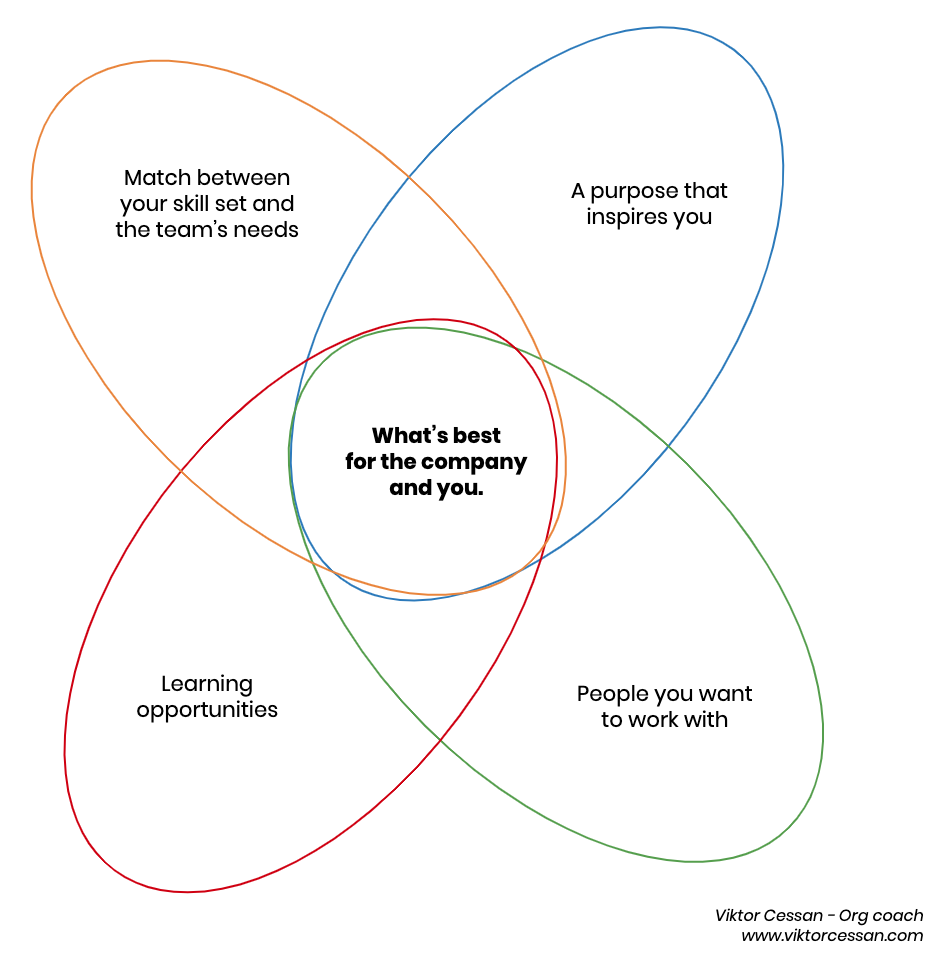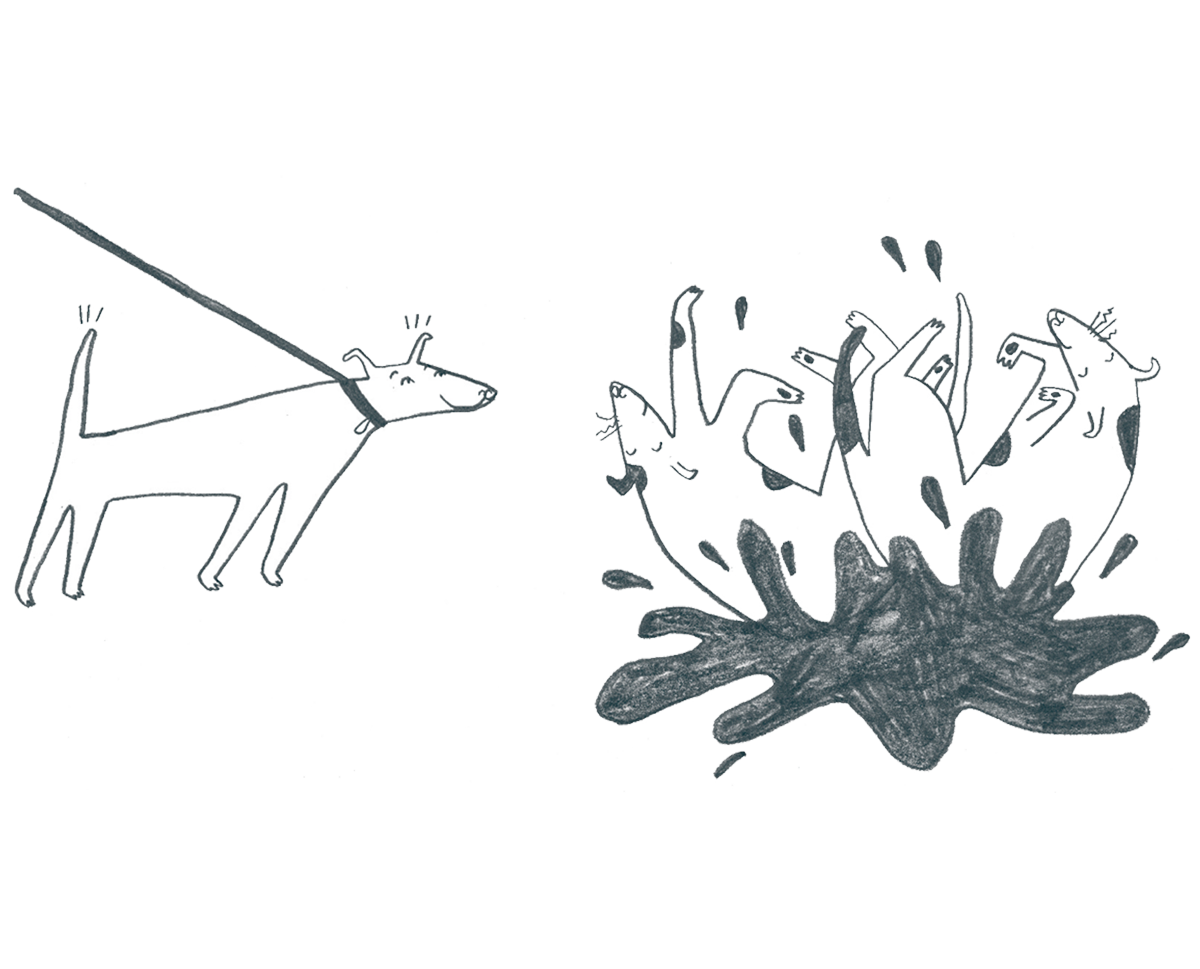“How do I know which team to choose and what guidelines I should apply?”
“How do we make sure people make good choices, not just for themselves but for all of us?”
These are the two most common questions managers and team members ask before any self-selection event. This post will provide guidelines for both of them.
Do what’s best for your company!
That’s the core premise that we run all our self-selections against and it’s what we recommend in our book “Creating Great Teams - How Self-Selection Lets People Excel”. We believe in it so much that we usually have a big banner in the room with those exact words “Do what’s best for __company name __!


But what does it actually mean?
Let’s start with the purpose of self-selection - which is to design the best possible teams in an organisation by having everyone decide which team they want to work in.
This will result in the best outcome because:
- we know that people perform best when they work on what they want and with whom they want
- we trust the people who are closest to the problem and therefore have the most knowledge to come up with the best solution
So, if you’re taking part in a self-selection event here are some guidelines for how to make that choice. Choose what’s best for the company AND for you!
Viktor Cessan, one of my favourite agile coaches in the world and former colleague of mine (who also blogs here), shared this brilliant illustration with me:

The sweet spot of team choice is the intersection of what floats your boat, keeps you engaged and gives you the opportunity to contribute and learn.
I love Viktor’s guidance because it can easily be distilled into four guiding questions. When choosing your team ask yourself:
- What can I learn?
- What can I contribute?
- What do I want to work on?
- Who do I want to work with?
Getting those right will result in what’s best for your company AND you.
Let me unpack those questions:
1) What can I learn? (Learning Opportunities)
We are motivated by mastery; by honing our skills and by learning new things. Not necessarily every single day but over time we do want to develop in our professions and as human beings. If we don’t feel we’re developing, we’ll get bored, become sloppy and dissatisfied.
My personal guidance for how to pick a team is to be the worst player on the best team that will still accept you. Why? Because if you surround yourself with people who are better than you and who set a high level of performance you’ll normalise that level of performance. And once that level of performance becomes normal it will help you to push yourself and continuously improve.
2) What can I contribute? (Match between Your Skills and the Team’s Needs)
This is where the part of the sentence “… will still accept you.” in “Be the worst playing on the best team that will still accept you” comes into play.
It’s not all about your learning, it’s also about the value you can provide to a team. A team will only want you if you have something to contribute and it’s also only fair to your company if you provide value.
If you don’t get this right it’s not only unfair to your company and your team, you also won’t be happy in the long term. Nobody likes feeling like they are dead wood and the feeling of not being good enough will ultimately grind you down and diminish your job satisfaction. It’s about finding the sweet spot of stretching yourself to keep learning and providing enough value to deserve your spot on the team.
3) What do I want to work on (A Purpose that Inspires Me)
We do our best work and enjoy it the most when we have the opportunity to create something we find meaningful and important. Hopefully a lot of that is covered when you join your company. After all, you choose to work there because you believe in its purpose. If that’s not the case, it might be a good idea to look for a new job.
Most teams at your company should give you a sense of purpose and hopefully clarity around how it fits in with and serves the company’s overall purpose. At the time of self-selection check if the team’s purpose inspires you and keep in mind inspiration usually grows stronger as you learn more about the customers and context.
4) Who do I want to work with? (People you want to work with)
Almost no one in modern work life can achieve much without a team (see also article “Individual performance is irrelevant”) and achieving things together is both fulfilling and fun. A great team is so much more than the sum of its parts and requires the right skills, attitudes, level of diversity and psychological safety.
So, don’t base your choice on who your friends are and who you’d like to have a beer with. Base it on who you think would make a winning combination.
Contrary to what many people think, it’s not a prerequisite to be
friends to make a great team. Trust, safety, respect and shared values
are a lot more important. Make your choice dependent on WHO you are
willing to invest time and effort in to build a great team.
Now what?
We found that sharing the above guidelines prior to self-selection events was useful to help people realise that several teams actually ticked their boxes. "Come to think of it, many team missions are actually appealing", we heard time and again (For a simple team decision matrix go here).
However, even with those guidelines, sometimes a few people won’t end up on their preferred team. They will compromise and “take one for the team” for the greater good of the company. They will put doing what’s best for the company over their own needs. This is often important and necessary but keep in mind that any such sacrifice will only work for a short time.
It is therefore important to repeat self-selection every 6-9 months to give people the chance to move to a different team, to share the burden of “taking one for the company” and to accommodate new people and new desires.
If you get this right, you’ll be doing what’s best for you and for your company. Everyone wins.
